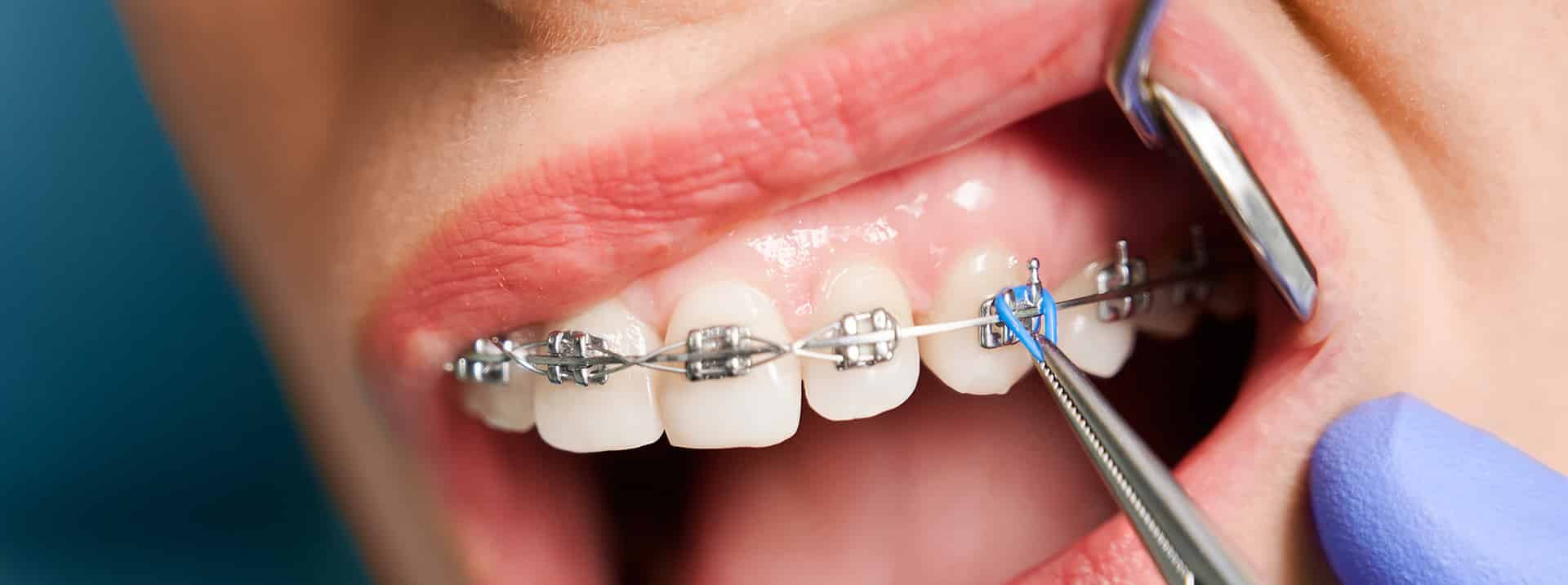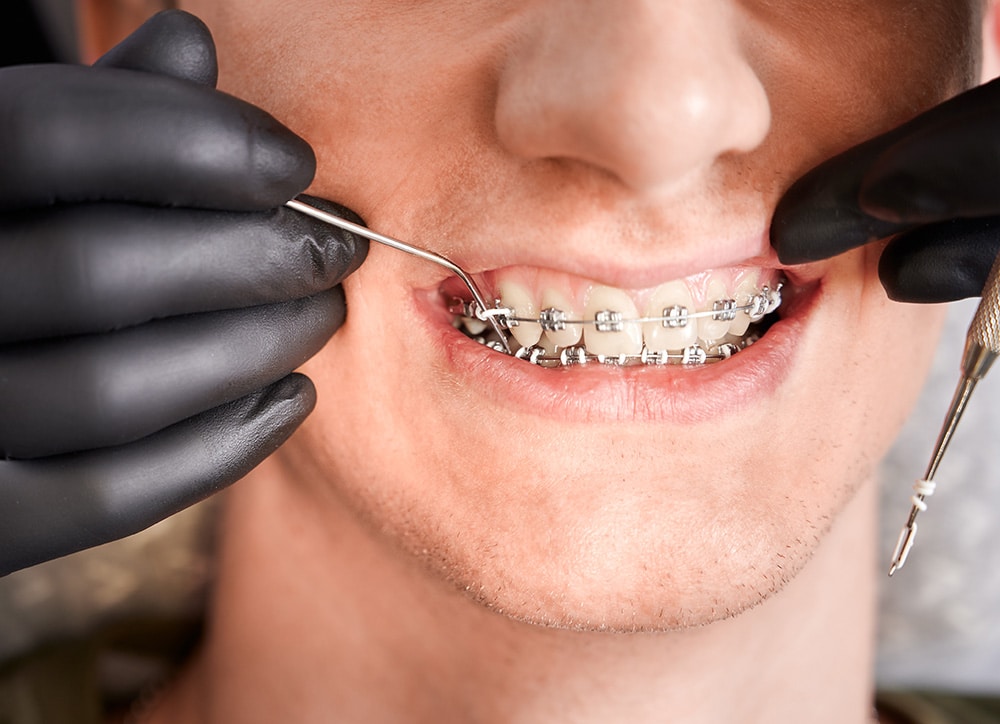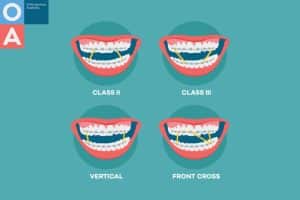What are elastics for Braces and why are they important?
May 1, 2017
These tiny elastic bands may seem insignificant, but they play a crucial role in achieving that perfect smile. Orthodontic elastics, also known as rubber bands, work by exerting gentle pressure on the teeth and jaws, helping to correct bite problems and align the teeth properly. They are a vital component of many orthodontic treatment plans, yet their importance is often overlooked.
How do Orthodontic Elastics work?
Orthodontic elastics work by applying continuous, gentle force to the teeth and jaws. They are usually attached to brackets or aligners and come in varied sizes, strengths, and configurations based on the specific treatment needs of each patient. The elastic bands create a pulling or pushing force that helps to move the teeth into their desired positions and correct bite issues.
When the orthodontist places the elastics, they will provide specific instructions on how to wear them. Patients are advised to wear elastics around the clock, only removing them for eating and brushing their teeth. Consistency is key, as the elastics need to be worn consistently to maintain the desired force on the teeth and jaws.
The force exerted by the elastics stimulates the remodeling of bone and helps the teeth to shift gradually over time. By applying pressure in the right direction, orthodontic elastics can correct various orthodontic issues, including overbites, underbites, crossbites, and open bites. They play a crucial role in achieving proper alignment and a functional bite, which not only improves the appearance of the smile but also contributes to overall oral health.
Orthodontic elastics are often used in conjunction with other orthodontic appliances, such as braces, aligners, or headgear, to achieve optimal results. The combination of these tools allows orthodontists to address different aspects of the bite and tooth alignment, providing comprehensive treatment for patients.
Importance of Orthodontic Elastics in treatment
Orthodontic elastics are an essential component of many orthodontic treatment plans. They serve several important functions in the process of aligning the teeth and correcting bite issues.
Firstly, orthodontic elastics help to close gaps between the teeth. In some cases, there may be spaces between the teeth that need to be closed as part of the treatment. By applying continuous pressure, the elastics gradually bring the teeth together, eliminating these gaps and creating a more uniform and aesthetically pleasing smile.
Orthodontic elastics assist in achieving a proper bite relationship. Bite problems, such as overbites, underbites, and crossbites, can cause functional issues and even lead to dental problems overall. Orthodontic elastics help to align the upper and lower jaws correctly, ensuring that the bite functions properly and reducing the risk of complications.
Orthodontic elastics contribute to the stability of the orthodontic treatment results. After the braces or aligners are removed, the teeth need time to settle into their new positions. Wearing orthodontic elastics during this post-treatment phase helps to maintain the achieved alignment and prevent any relapse.
Overall, orthodontic elastics play a crucial role in the success and longevity of orthodontic treatment. They work in harmony with other orthodontic appliances to achieve precise tooth movements and bite corrections, leading to a beautiful smile and improved oral health.
Role of Orthodontic Elastics in different Orthodontic Treatments
Orthodontic elastics are versatile tools that can be used in various orthodontic treatments. Their specific role may vary depending on the treatment plan and the orthodontic issues being addressed. Here’s a look at how orthodontic elastics is used in different treatment scenarios:
- Braces
Orthodontic elastics are often used in combination with braces to correct bite problems and align the teeth. They are attached to specific brackets or bands and create the necessary force to guide the teeth into their desired positions. The elastics work in conjunction with the braces to achieve optimal tooth movements and bite corrections. - Aligners
In some cases, aligner treatment alone may not be sufficient to address certain bite issues. Orthodontic elastics can be used in conjunction with aligners to provide additional force and guide the teeth into the desired positions. This combination allows for more precise tooth movements and bite corrections. - Jaw surgery
In cases where orthognathic surgery is required to correct significant bite discrepancies, orthodontic elastics may be used to prepare the jaws for surgery. The elastics help to align the jaws properly before the surgical procedure, facilitating a more successful outcome. - Orthodontic relapse
In some instances, orthodontic relapse may occur after the completion of treatment. This is when the teeth gradually shift back to their original positions. Wearing orthodontic elastics during the post-treatment phase can help maintain the achieved alignment and prevent relapse.
Orthodontists carefully evaluate each patient’s unique needs and treatment goals to determine the appropriate use of orthodontic elastics. The combination of orthodontic appliances and elastics allows for comprehensive treatment that addresses various orthodontic issues.
Types of Orthodontic Elastics
Source: Orthodontics Australia
Orthodontic elastics come in several types, sizes, and configurations, allowing orthodontists to tailor the treatment to each patient’s specific needs. The choice of elastics depends on the orthodontic issue being addressed and the desired tooth movements. Here are some common types of orthodontic elastics:
- Class I Elastics
These elastics are the most used type and are used to correct bite problems and align the jaws. They are usually worn in a triangular configuration, connecting the upper and lower arches. - Class II Elastics
Class II elastics are used to correct overbite problems, where the upper teeth protrude excessively over the lower teeth. They are worn in a vertical configuration, connecting the upper and lower jaws to encourage the proper alignment of the bite. - Class III Elastics
Class III elastics are used to correct underbite problems, where the lower teeth protrude in front of the upper teeth. They are also worn in a vertical configuration but connect the lower and upper jaws to promote proper alignment. - Interarch Elastics
These elastics are used to correct various bite issues, such as crossbites, open bites, and midline discrepancies. They are worn in a diagonal configuration, connecting the upper and lower jaws at specific points to guide the teeth and jaws into the correct positions.
Orthodontists will determine the appropriate type, size, and configuration of elastics based on each patient’s unique needs. It is essential to follow the orthodontist’s instructions regarding the wear and placement of the elastics to ensure optimal treatment outcomes.
Common misconceptions about Orthodontic Elastics
Despite their importance, orthodontic elastics are often surrounded by many misconceptions. Let’s address some of the common misconceptions to help clear up any confusion:
- Orthodontic elastics can be skipped
Some patients may think that wearing orthodontic elastics occasionally or not at all will not affect their treatment. This is not true. Orthodontic elastics need to be worn consistently as instructed by the orthodontist to achieve the desired tooth movements and bite corrections. Skipping or inconsistent wear can compromise treatment outcomes. - Orthodontic elastics can be worn at any time
Orthodontic elastics are usually worn around the clock, except when eating and brushing your teeth. Some patients may mistakenly believe that they can wear the elastics at any time during the day. However, it is essential to wear them consistently to maintain the necessary force on the teeth and jaws. - Orthodontic elastics are one size fits all
Orthodontic elastics come in many sizes, strengths, and configurations. The type of elastics prescribed for each patient is specific to their orthodontic needs. It is crucial to follow the orthodontist’s instructions regarding the type and size of elastics to ensure optimal treatment outcomes. - Orthodontic elastics alone can correct all orthodontic issues
While orthodontic elastics play a significant role in orthodontic treatment, they are often used in combination with other orthodontic appliances to address specific needs. Braces, aligners, or other appliances may also be needed to achieve the desired tooth movements and bite corrections.
Addressing these misconceptions can help patients better understand the role and importance of orthodontic elastics in their treatment.
Potential side effects - How to manage
While orthodontic elastics are safe and well tolerated, there can be some side effects associated with their use. It’s important to be aware of these potential side effects and know how to manage them:
- Discomfort
It is common to experience some initial discomfort when wearing orthodontic elastics, especially when they are first placed or after their replacement. This discomfort usually subsides within a few days as the mouth adjusts to the extra pressure. Over-the-counter pain relievers can help alleviate any discomfort during this initial period. - Soreness
Some patients may experience soreness in the jaw or muscles around the mouth due to the continuous force exerted by the elastics. This soreness typically resolves on its own as the treatment progresses. Applying a warm compress or using a mild mouth rinse can provide relief. - Breakage
Orthodontic elastics can occasionally break or snap. This can happen due to several reasons, such as excessive force, improper wear, or wear and tear over time. If an elastic breaks, it is important to replace it promptly to maintain the necessary force on the teeth and jaws. Always keep spare elastics with you to ensure you can replace any broken ones. - Allergic reactions
In rare cases, some individuals may develop an allergic reaction to the materials used in orthodontic elastics. If you experience any unusual symptoms, such as persistent itching, swelling, or difficulty breathing, contact your orthodontist immediately.
If you have any concerns or experience persistent discomfort or issues with your orthodontic elastics, it is important to consult with your orthodontist. They will be able to assess the situation and provide appropriate guidance or adjustments to ensure your treatment progresses smoothly.
Tips on how to wear Orthodontics Elastics effectively
-
- Wear them always
Not every case need elastic. In the cases which require elastics to be worn, your orthodontist may ask you to wear them 24/7. This means that you are having your food with your elastics on. Your chewing movements help the elastics to align your teeth into a correct biting pattern.
- Wear them always
-
- Change them as instructed
You will be asked to change your elastics a couple of times every day. Remember to change them even if they are not broken as elastics lose their strength after a few hours.
- Change them as instructed
-
- Never overdo it
Never place double elastics with the hopes of finishing the treatment fast.
- Never overdo it
-
- Never stop wearing due to soreness
You may experience soreness due to the rubber bands during the initial days. That should never deter you from wearing them. The ache is due to the force that is applied by the elastics on your teeth. Pain is a sign that your teeth are moving to their new positions correctly.
- Never stop wearing due to soreness
Conclusion
Wearing orthodontic elastics may initially seem like a tedious and cumbersome task. However, it is crucial to understand that these elastics play a significant role in achieving a beautiful smile.
Think of them as a routine form of exercise for your teeth, where your determination and commitment will pay off. By diligently wearing these orthodontic elastics as prescribed by your orthodontist, you are actively participating in the process of aligning your teeth and achieving a well balanced bite.
So, even though it may take some time getting used to them, remember that the result will be worth it.











